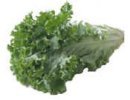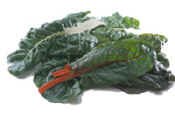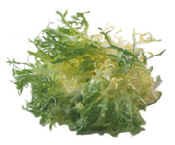
|
| Home | Reading Room | Newsletter | Reminders | Technique | Nursery |
| News | Sustainable Gardening | Trees & Shrubs | Flowers | Composting | Soil |
| Shopping | Tools | Books | How To's | Practical Advice | Children | IPM |
Home
GREENS!Salads are great any time of the year and selection of lettuce in supermarkets is better these days than it used to be, but it still can't compare to the wide assortment of varieties available in seed catalogs. There are hundreds of varieties to choose from, providing a wide range of sizes, colors, textures and tastes. Not only do you have more choices if you grow your own, but your salads will be fresher, maybe less expensive – and there's just something more satisfying about eating something you've produced yourself. You can even grow your own outdoors and indoors under lights winter and summer.Small-leafed greens are excellent for indoor growing. Remember to wash salad greens well and drain completely. Invest in a good salad spinner to remove excess water after washing, so the salad dressing clings to the leaves. Leafy green (and other colored) vegetables are excellent sources of fiber as well as vitamin A, iron, calcium, and many other nutrients. Note that iceberg lettuce has very few nutrients and little flavor. You won't find it listed here. Choose a new one to experiment with this week!
Lettuce is a hardy, fast growing annual that does best in cool weather – spring and fall in Wisconsin. Plant seeds in the garden as early as 4 to 6 weeks before the average date of last frost, or begin plants indoors earlier to set out 2 to 4 weeks before last frost. Successive crops can be sown every couple of weeks for continuous harvest throughout the summer and fall. With increasing day length and heat, lettuce has a tendency to bolt, or form a flower stalk – and the leaves become bitter. For summer lettuce, select heat-resistant varieties and grow them in light shade. Plant lettuce seed in well-worked soil with good drainage and moisture retention. Sow seeds ¼ inch deep and space rows 12 inches apart. If you intend to allow your lettuce to mature and form heads (for those varieties that form heads), you will have to thin the lettuce. When the seedlings are large enough to handle, remove plants to leave individual plants 6 to 12 inches apart. Or, you can allow the plants to grow to about 3 inches and selectively harvest very young plants for salad, leaving plants at the appropriate spacing. Be careful not to disturb the roots of the plants you intent to keep as you harvest the others. If the rows were thickly seeded, or the plants are much larger than 3 inches, the remaining plants may flop over without the surrounding plants for support – mound a little extra soil around the base to stabilize the plant until it becomes re-established. As the lettuce grows you can selectively harvest outer leaves, leaving the inner leaves to develop, or wait to harvest the entire plant at maturity by cutting it off at ground level. The time to maturity depends on the variety you plant. Literally hundreds of varieties of lettuce are available from numerous seed companies, and almost everyone will have their own favorite. The first named lettuce cultivars in the U.S. were listed in 1806, and some varieties that were introduced over 100 years ago are still available: 'Iceberg' lettuce was released in 1894 by Burpee, while the leaf lettuce 'Grand Rapids' was released in 1890. Probably the hardest thing about growing lettuce is deciding which varieties to grow. Here are a few comments, in no particular order, about just a few varieties (please don't feel slighted if your favorite isn't included): 'Black Seeded Simpson' is a reliable old-time light green leaf lettuce. 'Red Sails,' a former AAS winner, is one of the slowest bolting red leaf lettuces. 'Sierra Batavian' has red tinged over green, thick romaine-like leaves and great flavor, and grows well in the cool of spring or heat of summer. 'Red Fire' is a beautiful red fast-growing lettuce that can also take the heat. 'Deer Tongue' is an heirloom variety with flat, triangular leaves. 'Little Gem' is a small butterhead type good for small spaces or containers. 'Buttercrunch' is another long-time favorite butterhead (1963 AAS winner) with tender leaves that is slow to bolt. Many disease-resistant varieties are available, too, although this is generally more important for commercial growers than home gardeners. |
| Reading Room | Trees and Shrubs | Flowers | Composting | Soil | Nursery |
| Shopping | Books | Tools | News | Internet Gardening | Links | Support |
| Vermicomposting | Pest Management | How To's | Practical Advice | Children |
| Home | Newsletter | About Us | Support | Contact |
|
GardenSimply.com | All Rights Reserved 2005 |
|
FREE
Garden Journal!! Join "Garden Notes" and plan for Harvest
Success as you track and record your gardening progress. Your Free Personal
Garden Journal includes printable pages making it easy for you to:
|
|
|
|
|
|
|
|
|
|

|
|
|
|
 Leaf types do not form a head, but stay as an open rosette. Individual leaves
can be cut off as needed without harvesting the entire plant. These vary in
texture from soft to crisp and run the gamut from pale green to dark red. Most
have a mild, delicate flavor and is versatile for many types of green salads.
Types range from green to red and gold colored varieties.
Leaf types do not form a head, but stay as an open rosette. Individual leaves
can be cut off as needed without harvesting the entire plant. These vary in
texture from soft to crisp and run the gamut from pale green to dark red. Most
have a mild, delicate flavor and is versatile for many types of green salads.
Types range from green to red and gold colored varieties. Swiss
chard has large stems with a delicate flavor similar to
celery; leaves have a hearty spinach-like flavor. It too
can be cooked by stir-frying or lightly steaming.
Swiss
chard has large stems with a delicate flavor similar to
celery; leaves have a hearty spinach-like flavor. It too
can be cooked by stir-frying or lightly steaming. Curly
endive has a mildly bitter flavor and adds visual
interest to salads. The finely cut leaves hold salad
dressing particularly well.
Curly
endive has a mildly bitter flavor and adds visual
interest to salads. The finely cut leaves hold salad
dressing particularly well.


